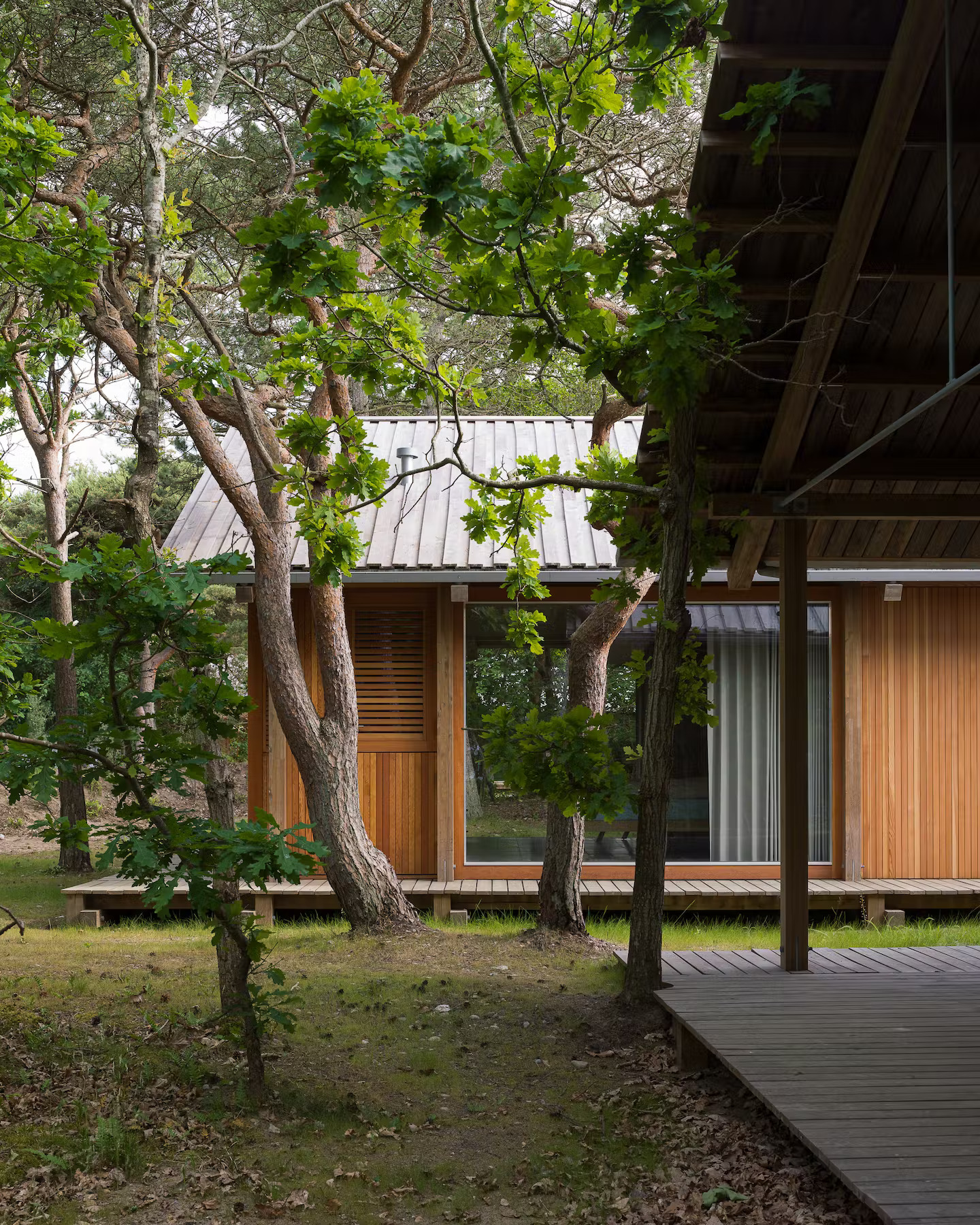Summer Houses in Rågeleje are minimal holiday homes located in Rågeleje, Denmark, designed by Pihlmann Architects and Kim Lenschow. Nestled amid a verdant mix of deciduous and coniferous trees, shrubs, and rhododendrons, a quartet of understated homes stands as a testament to minimalist design and harmonious living. Commissioned by four brothers and situated within close proximity to the ocean shore, these residences embrace the coastal climate while paying homage to their wooded surroundings. The modest scale of each house reflects a conscious decision to respect the grandeur of nature. The structures have been meticulously placed to accommodate the site’s existing flora, with every tree preserved to maintain the natural rhythm of the landscape.
This reverence for nature extends to the choice of building materials, with four distinct types of wood selected for their unique properties. The exterior timber structure, including the roofs and decks, is crafted from solid robinia, a durable choice well-suited to the coastal environment and sandy soil. Robinia glulam, known for its structural strength, forms the backbone of each home. Inside, the warm tones of European pine and slow-growing Douglas fir echo the earthy hues of the exterior, with the former used for furniture and lining and the latter for façade elements such as cladding, windows, and doors. Handmade tile floors provide a grounding element, connecting the homes to the earth while encouraging seamless indoor-outdoor living. In the bathrooms, walls and floors are clad in half-sized tiles, continuing the pattern found throughout the rest of the interior.
Stainless steel sinks offer a sleek contrast to the patinated brass pipes and faucets. The four homes share a common design blueprint, with two annexes housing bedrooms and bathrooms and two larger structures featuring kitchens and living rooms. Custom-made furnishings and fixtures, including cupboards, sinks, handles, hinges, and lamps, are tailored to each space, imbuing the project with a cohesive aesthetic. Embodying a low-tech architectural approach, the project fosters an intimate connection between the residents and their environment, functioning like an analog toolbox designed for use. This assembly of simple, robust materials and components gracefully acknowledges the passage of time and the touch of human hands, creating a series of spaces that seamlessly blend with the surrounding landscape.
Photography by Hampus Berndtson















